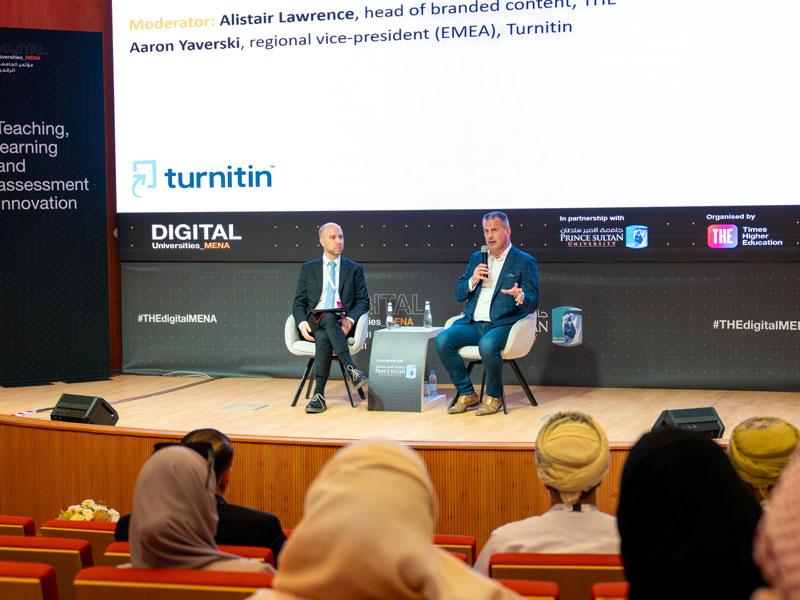The launch of OpenAI’s generative artificial intelligence (AI) tool, ChatGPT, marked a turning point in the evolution of technology and its role in education. Now a ubiquitous tool, ChatGPT has sparked extremes of fear and curiosity among academics and students alike. Speaking at a session at the 2023 THE Digital Universities MENA summit, Aaron Yaverski, regional vice-president for EMEA at Turnitin, described it as a collective “heart attack” for the academic community.
The session, held in partnership with Turnitin, explored the impact of AI on education, including methods of responsible integration and practical applications of AI in education. “Lots of people got nervous that this would be the end of independent writing for students and the end of teaching tools as we knew it. But, in fact, AI can be a very powerful tool,” Yaverski said. “It’s not the end of anything we do. It’s about how we help students get to that critical thinking point in whatever they’re working on.”
Yaverski pointed out that a recent study by Tyton Partners revealed that only 3 per cent of higher education institutions have established a student policy on AI. This is despite the fact that 51 per cent of students said they would continue to use generative AI tools even if their instructors prohibited it. More than half of institutions said they are developing an AI policy, but many feel adrift without a framework to operate within. “Without a policy, rules are created by different departments, which means a lot of confusion for students who think they can use AI in one class but not in another,” he explained.
Yaverski added that looking at AI more holistically, beyond the risk of plagiarism, can help teaching staff embrace its positive aspects. “As an instructor, it can help you create coursework and help you make sure your content is inclusive. It can help students advance to the point in their essay where they need to employ critical thinking, rather than having to spend a lot of time focusing on the basics.”
This approach can help to build a healthy culture around the use of AI. For example, an AI detector tool could prompt a conversation about the reasons why students use such tools, rather than automatically meting out penalties. This can help educators guide students towards the practical applications of AI – as something that can assist them instead of replacing them in the labour pool. “It’s about showing them how we adapt. We need to make sure this is part of our teaching for our students so they’re employable,” Yaverski said.
According to Yaverski, remaining flexible is crucial. “Universities need to be patient because AI will keep changing and will continue to change for a period of time.” Institutions should focus on having conversations with students regarding technology and implement policies to educate rather than punish. Additionally, it is worth considering that students may find new and creative ways to use these tools, he concluded.
The panel:
- Alistair Lawrence, head of branded content, Times Higher Education (chair)
- Aaron Yaverski, regional vice-president for EMEA, Turnitin
Find out more about Turnitin.


comment